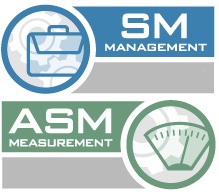SM/ASM 2001 - Software Management & Applications of Software Measurement

PRESENTATIONS
|
The Need for Speed: Filling the Empty Chair
The paper provides an analysis of challenges that engineering and human resources managers face when attempting to recruit new staff. Successful staffing of a software engineering organization in an intensely competitive market is described in terms of the key elements of the staffing process and proven strategies that help to stay ahead of the competition. |
|
|
The Ritual of Retrospectives: Your First Best Tool for a Learning Organization
You've just finished your software release. You have signed off, and it's been shipped. You're done, right? No! The moment a project ends is the perfect time to reflect on the entire project to see what there is to learn-the unique moment when the project can be viewed in its entirety. You can look at the completion of your project as having "paid your tuition." So, now what are you going to learn from it? In this presentation, Norm Kerth explores the benefits, pitfalls, and experiences with this project management tool. |
|
|
The Software Organization as a Complex Adaptive System
We are living and working in the "knowledge rea" where business, technological, and organizational changes cannot be predicted or foreseen. One minute you are on top; the next minute, you are obsolete. For a software organization to sustain itself over time, it must act as a Complex Adaptive system (CAS) and operate on the edge of Chaos (EOC) as a learning organization that is continuously learning and co-evolving. Gain insight into how to become a sustainable software organization in a rapidly changing environment. |
|
|
The Story Software Defects Tell about Project Management
We often evaluate and design software processes and activities as if putting them on lists and schedules will automatically make them happen. Yet software development also includes complex human interactions that must be planned and managed in order to gain best results, or to even survive. |
|
|
The World Wild Web: A New Paradigm of Responsiveness Reliability
While the Internet was once a simple tool for educational institutions to share information, it is now a unique venue for marketing, selling, and gathering information. Design and deployment plans must now be simultaneously flexible yet reliable. Lack of functionality will not be tolerated in this new environment. Learn of the new challenges faced by software management in the ever-changing and developing Internet culture. Discover why testing has become one of the most critical aspects of software management. |
|
|
Thinking About People, Process, and Product: A Principle that Works at Work
All projects involve the three P's: people, process, and product. People includes everyone who influences the project. Process is the steps taken to produce and maintain software. Product is the final outcome of the project. To keep these three in harmony, you must observe who is trying to do what to deliver what. Usually, two of the three P's are mandated, and the third one is chosen appropriately. Although this is common sense, it is not common practice. |
|
|
Three Numbers to Measure Project Performance
We present a method which produces at any time during the execution of a big software |
|
|
To Fight the Fire Without Completely Being Burned: A New Perspective on Heroes and Firefighters
Michael Hovan discusses the implementation of Bayer Corporation's measurement database over the past year. Discover the types of metrics collected, how the data is stored, and ways the data is analyzed and ultimately used. Based on actual data and measurement reports, learn from one company's experience in building, collecting, and using metrics to improve software performance. |
|
|
Using Statistics to Evaluate Process Improvement
The techniques associated with Statistical Process Control (SPC) are very useful, but they are not sufficient alone to |
|
|
Warp 6, Mr. Sulu: The Future of Software Development
As a manager, you have many readings which help you monitor your course. Choosing a direction is a different matter. Like the crew of any Star Trek episode, you may have to make a decision based on the unknown. The best choice may not be based on what you know-but what is possible. For years we have built software in roughly the same way. |
|


